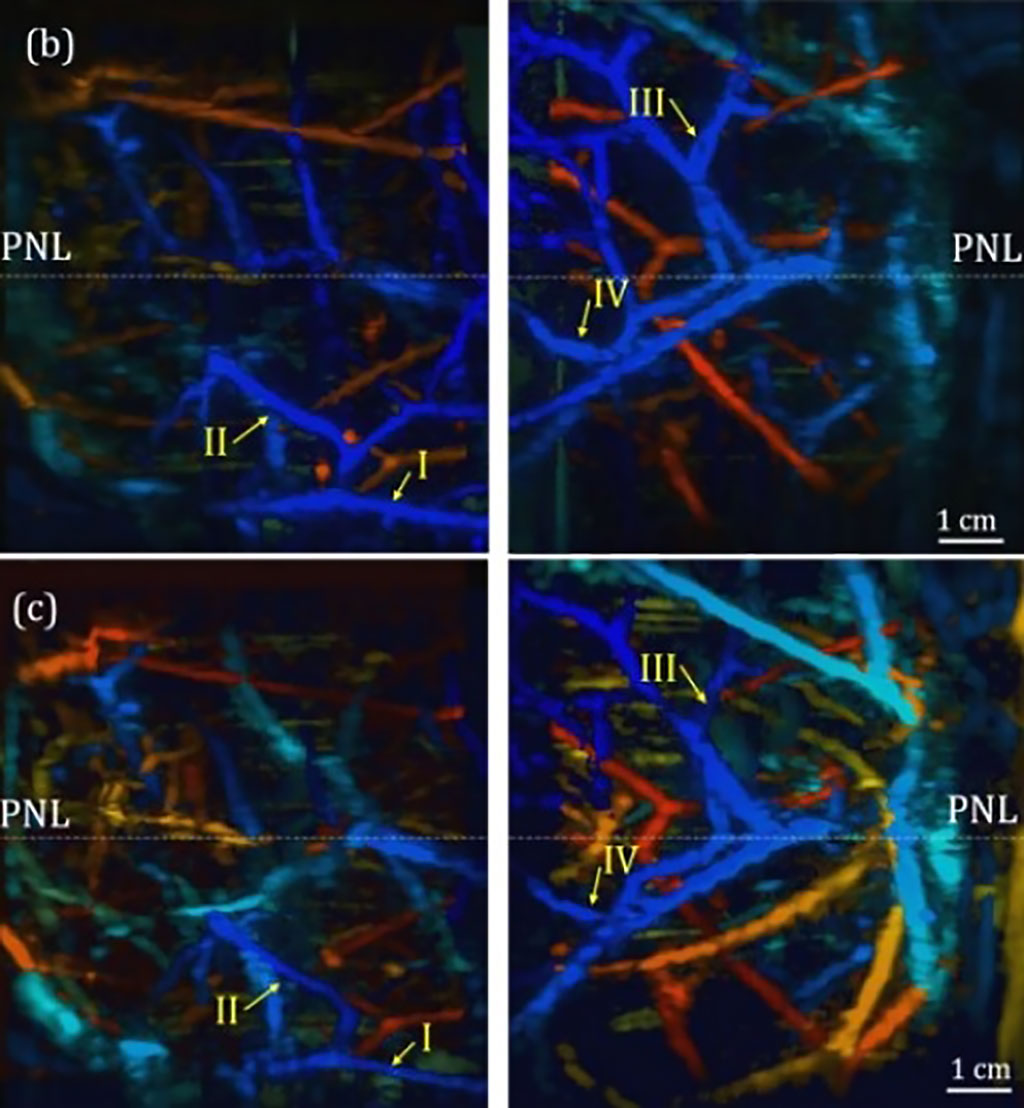Photoacoustic Imaging System Helps Identify Breast Cancer
By MedImaging International staff writers
Posted on 12 Dec 2019
A portable photoacoustic tomography device that combines light and ultrasound technology has the potential to better identify breast cancer in women with dense breast tissue.Posted on 12 Dec 2019
The prototype Dual Scan Mammoscope (DSM), developed at the University at Buffalo (NY, USA), Roswell Park Cancer Center (Buffalo, NY, USA) and Windsong Radiology (Williamsville, NY, USA), is a breast imaging system that provides visualization of angiographic features in the human breast with mammogram-like images. The system uses line optical fiber bundles to deliver the laser light energy that generates the acoustic waves, and two 128-element, 2.25 MHz linear transducer ultrasound arrays to receive them.

Image: Breast tissue acquired by the DSM, with vessels in blue closest to the breast surface (Photo courtesy of Jun Xia, University at Buffalo)
The DSM images a mildly compressed breast, with two scans performed simultaneously, one working from the bottom of the breast while the other works from the top. The mild compression is achieved using plastic films, which are a more comfortable experience for the patient. In a study of the system, a D cup-sized breast of 7 cm thickness was scanned within one minute, achieving a spatial resolution of around one mm. The craniocaudal-view images can also be correlated with existing imaging modalities for data interpretation. The study was published in the August 2019 issue of IEEE Transactions on Biomedical Engineering.
“The design ensures optimal light delivery and acoustic detection, enabling imaging deep into breast tissue. It's also portable; for example, it could easily fit into mobile mammogram units,” said lead author Jun Xia, PhD, of the department of biomedical Engineering. “And while MRI requires a contrast agent, the DSM test uses hemoglobin, a protein in red blood cells that carries oxygen throughout the body. The DSM method shows promise in detecting tumors in the sub-millimeter range, provided they exhibit sufficiently developed blood vessels.”
Photoacoustic imaging is based on non-ionizing laser pulses fired into biological tissues; some of the energy delivered is converted into heat, leading to transient thermoelastic expansion and subsequent wideband ultrasonic emission, which can be detected by ultrasonic transducers and analyzed to produce images. The magnitude of the photoacoustic signal is proportional to the local energy deposition, which can be demonstrated by optical absorption contrast on the images of the targeted areas.
Related Links:
University at Buffalo
Roswell Park Cancer Center
Windsong Radiology














.jpg)